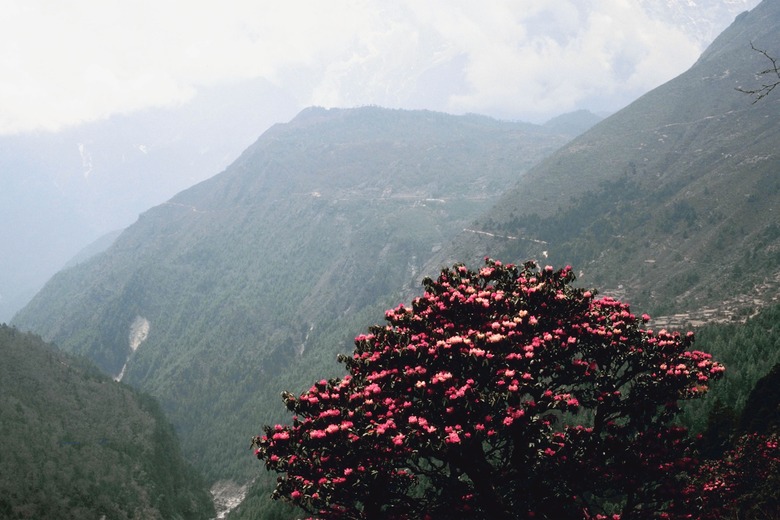How To Care For A Dying Rhododendron
Things Needed
-
Garden clippers
-
Insecticides
-
Soil
Warning
Only replace the soil as a last resort. Your rhododendron's health is already fading, so you want to expose it to as little stress as possible. Changing the soil creates a lot of stress on the plant, so do not take this step unless you believe it is the only chance of saving the rhododendron.
Rhododendrons are lovely plants with enchanting blooms that range from dark red to lavender. The plants are able to survive and bloom for many years. Unfortunately, the lovely plant is prone to disease and pests. Some of the most common dangers to your rhododendron include aphids, root rot and Japanese beetles. Do not worry, though, because with the proper knowledge and tools, you may be able to nurse your rhododendron back to health and prevent any further damage.
Step 1
Prune away any dying tissue. This can include anything as small as a single leaf or as large as an entire branch. Once the plant no longer has to support that ailing tissue, it can divert energy its healthier sections.
Step 2
Spray the leaves and stem of your rhododendron plant with insecticides. If your plant is already ill, the added stress of an infestation may kill it. Make sure to carefully follow the instructions listed on the insecticide label. Failure to follow the listed instructions can lead to serious illness or even death.
Step 3
Move your rhododendron if you think it may be getting direct afternoon sunlight. Direct sunlight after the morning hours may burn the leaves of the plant, so ensure it is getting mostly shade in the afternoon. Morning light is the only direct sunlight your plant should receive.
Step 4
Change your rhododendron's soil if you believe it retains too much water. Rhododendrons thrive in loamy, well-drained soil. Heavy soils that retain a lot of water can cause root and stem rot. One way to test the soil is to pinch a small amount of wet soil between your fingers. If the soil stays in the pinched shape, it may have too much clay to create a hospitable environment for your plant. If the soil crumples and returns to a loose state after you pinch it, it is fine. Make sure the drainage pan is not retaining water that may be harming the roots of the rhododendron.
